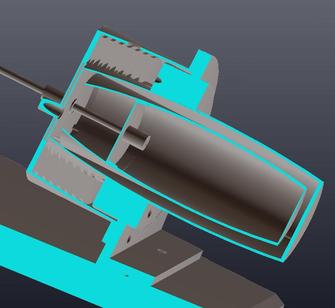Regenerator

This is a way of reducing the temperature of the air which passes from the hot end to the cool end of the displacer cylinder. Heat energy from the hot air is captured and stored in a perforated regenerative material as it passes through and is recovered as the cool air passes back into the hot end. This means that the temperature variation between each end is greater so the engine runs more efficiently. It also prevents the cool end from heating up as quickly as it had been on longer periods of operation. However, the use of a regenerator introduces an area of dead space. The regenerator has to be sufficiently effective in enhancing the temperature difference to justify the addition of the potentially performance reducing dead space. We have had to alter the dimensions of the hot cap, cold cap and insulator to include a regenerator in our improved design. Several new parts have had to be designed to support the regenerative material whilst allowing the displacer piston to continue to move smoothly.
We have not yet made a final decision on which regenerative material will be used. It has to be porous enough to allow a large enough volume of air pass through with each piston cycle whilst still retaining some of the heat energy. We are in the process of deciding between the use of steel wool, metal foil or ball bearings for the regenerative material. The advantages and disadvantages of each will be discussed before a decision is made about which will provide the greatest performance improvement.
We have not yet made a final decision on which regenerative material will be used. It has to be porous enough to allow a large enough volume of air pass through with each piston cycle whilst still retaining some of the heat energy. We are in the process of deciding between the use of steel wool, metal foil or ball bearings for the regenerative material. The advantages and disadvantages of each will be discussed before a decision is made about which will provide the greatest performance improvement.
